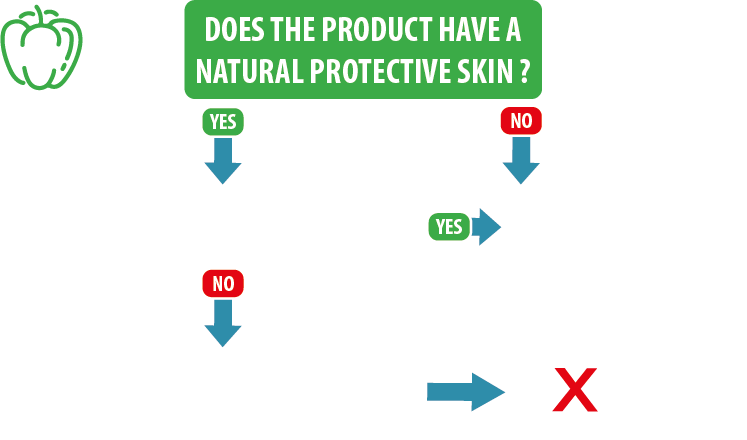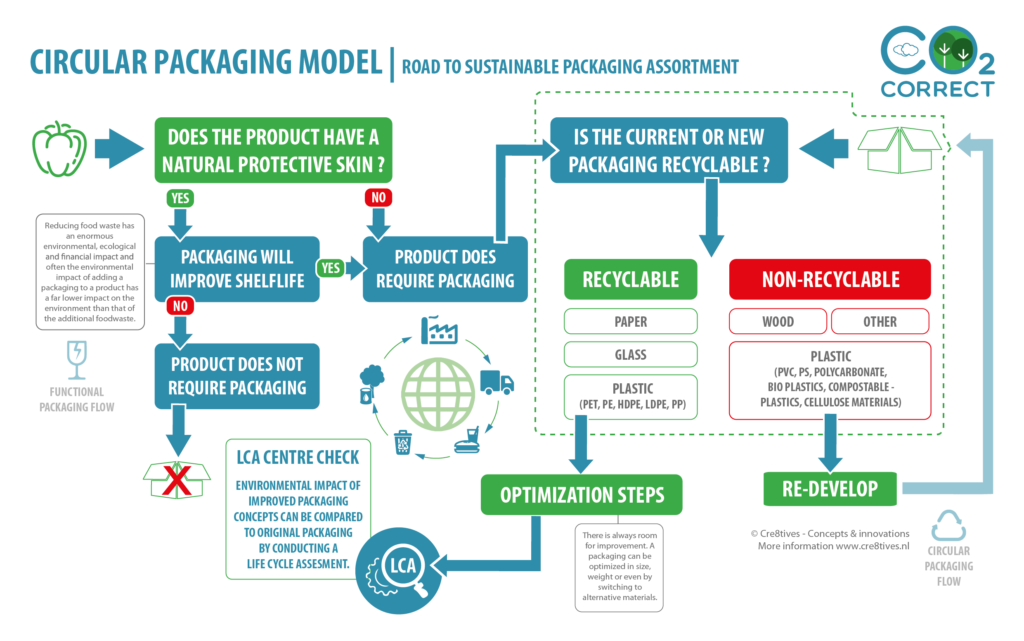Sustainable packaging is an important topic for most organisations in the Fruit and Vegetable industry. The sector is by far most criticized by consumers and for this retailers are demanding steps to be taken. Plastic packaging is replaced by cardboard varieties without looking at the true impact of the new alternatives.
For those people who are interested in the facts I have developed a model that people can use to develop a more sustainable packaging assortment. At first we need to look at the definition of sustainable. Sustainable can be the use of a material that has lowest impact on the environment. However if that material is just single use that means that eventually we are draining the globe of this material and to my opinion that is not really sustainable. So in my opinion the way to go more sustainable is to re-use something by recycling or any other way of making sure something is not thrown away or being burned. This is what we try to call a circular economy. We collect materials and we re-use them. So my model has been created with a circular view. With that in mind we can start looking at the model.

The first question we need to ask ourselves is do we really need to pack a product? This model has been created for the fruit and vegetable industry so in this case we need to ask ourselves if the product has a naturally protective skin. If it does and packing the product will not improve shelf life then we really do not need to pack it. Citrus is a good example. A strong product with a long shelf life. Packing it is absolutely not necessary. Of course a retailer can still decide to do so because it is convenient but when we are truly honest it should not be packed at all. Looking at it this way we could already cut back on a lot of packaging materials.

When a product is fragile or packaging does improve shelf life we can start to look at how to pack the product. This is the point where people are being misinformed by salesmen, environmental organisations or public opinion. The main question here: “Is your current or future packaging made from a recyclable material?”.
Going back to the circular economy story we want materials to be recyclable. That is the key to a useful or useless packaging. So looking at the European market we are collecting Food-waste, Paper, Glass and some Plastics and Tin Cans. Materials that are not collected separately are thrown in the leftover garbage by consumers and are being burned when processed. So a material like Wood is a non sustainable / non circular packaging materials because it is not being recycled.
Plastics are complicated. Certain types can be collected but others cannot and that is where people are being mislead. There are manufacturers of new innovative cellulose and compostable plastics who are selling more expensive materials that are recyclable but only when collected and processed in a specific machine that will start a certain process that breaks down the material. But since these plastics are not collected separately this will does not happen. Throw them away with the leftover food or throw it in your garden and these plastics will remain intact for a very long time. So actually these materials (that could be sustainable) are not since the European recycling industry is asking people to throw this with the leftover garbage that is being burned. So this is where the key is to selecting the possible sustainable materials. Are they recyclable?

After making your selection of materials you are able to improve sizes of your packaging and even compare different materials in regards to the environmental impact. Yes, I know that in this model plastics are regarded as a sustainable solution but in some cases plastics are the best suitable solution at this moment. We have to keep in mind that plastic when collected properly are not that bad for the environment. I am a big fan of cardboard packaging solutions but there I must admit that often a cardboard alternative has a bigger carbon footprint compared to the plastic packaging.
Here you can take a look at the complete model:
Of course the packaging issue is a complex one but with this model you are able to have quick assessment of your packaging assortment and see where the quick wins are in regards to going more sustainable. The biggest advantage for the environment is not packing some fruit and vegetables at all. Did you know that stop packing citrus and compensating the product with the CO₂ Correct label is actually more affordable then the packed alternative? Now that would be a great story to tell consumers and to persuade them to bring their own bags to the stores.
Stephan Schneider | CO₂ Correct
CO₂ Correct B.V. | Weestmeesterstraat 5 | 2645 MC Delfgauw – the Netherlands | E: info@co2correct.com | T: +31 (0)6 51 34 86 14
CO₂ Correct B.V. is registered with the Dutch chamber of commerce no. 78399378 | Read more about our Privacy policy or Code of conduct

